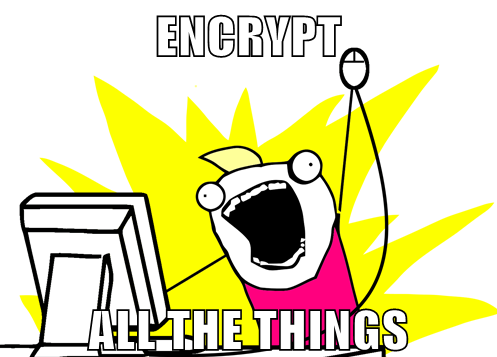Site now SSL by default
 Google recently announced that it is going to start prioritising websites that offer HTTPS by default in its search engine results. At first, the positive effect will be small to give webmasters time to switch to HTTPS, but it will gradually become more of a significant signal. This is a good thing for the internet: SSL doesn't cost much for webhosts, and it makes it more difficult to spy on everyone all the time! The Electronic Frontier Foundation praised the decision calling it a "bold and welcome move to protect users". I wanted to start offering some of the services I run on my server to other friends and family, and I couldn't easily install the CAcert root on all of their devices, so this seemed like a good time to purchase a cert. The following describes how I configured the various services (Apache, Postfix, Dovecot) to use the new certificate from COMODO.
Google recently announced that it is going to start prioritising websites that offer HTTPS by default in its search engine results. At first, the positive effect will be small to give webmasters time to switch to HTTPS, but it will gradually become more of a significant signal. This is a good thing for the internet: SSL doesn't cost much for webhosts, and it makes it more difficult to spy on everyone all the time! The Electronic Frontier Foundation praised the decision calling it a "bold and welcome move to protect users". I wanted to start offering some of the services I run on my server to other friends and family, and I couldn't easily install the CAcert root on all of their devices, so this seemed like a good time to purchase a cert. The following describes how I configured the various services (Apache, Postfix, Dovecot) to use the new certificate from COMODO.
 If you run your own website, email server or other services like OwnCloud at home then you may find yourself in need of a SSL certificate. When you install Apache, it generates a self-signed "snakeoil" certificate that can be used to encrypt your session. However, while this certificate is useful for testing purposes, it falls short in a couple of important ways:
If you run your own website, email server or other services like OwnCloud at home then you may find yourself in need of a SSL certificate. When you install Apache, it generates a self-signed "snakeoil" certificate that can be used to encrypt your session. However, while this certificate is useful for testing purposes, it falls short in a couple of important ways: